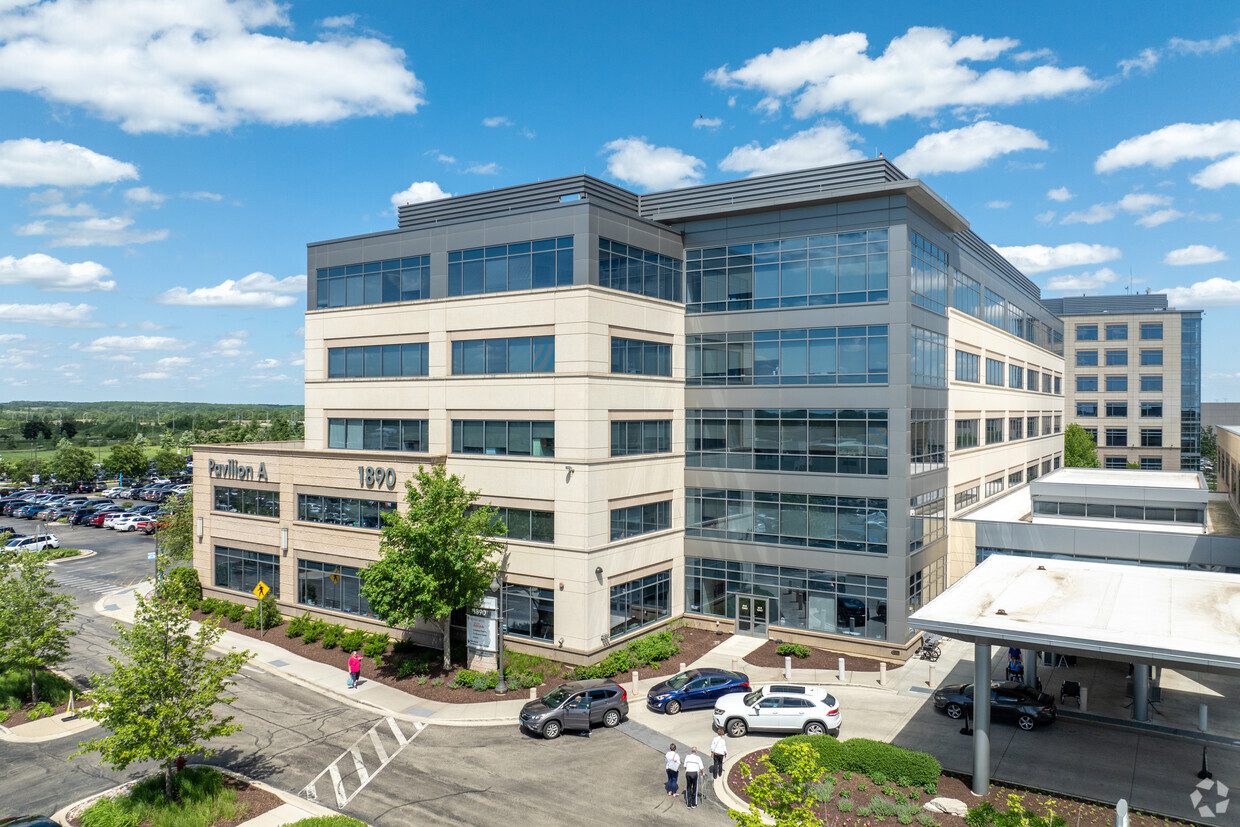June 2019
Who’s got their finger on the pulse of healthcare real estate?

The healthcare real estate sector has changed strikingly in the last decade, driven by aging demographics and increased ambition to deliver services outside of acute care settings. Over the next 10 years, the asset class will likely see even more drastic changes.
More than 120 Chicago CRE professionals came out to the 6th annual Healthcare & Medical Office Conference yesterday, hosted by REjournals. There were two panel discussions: the first gave the view from 30,000 feet at the state of the healthcare market while the second panel dove in on segmented solutions in healthcare and medical office buildings.
The state of the market
Moderated by Mary Ann Murray, partner, Quarles & Brady LLP, much of the discussion from the first collection of panelists focused on the steady creep of healthcare real estate from institutional locations and out into the communities where people live and work.
As part of the overall American economy, healthcare spending grew 3.9 percent in 2017, according to the U.S. Centers for Medicare & Medicaid Services, reaching $3.5 trillion, which equates to $10,739 per person or 17.9 percent of the nation’s GDP. This, said Chantily Malibago, director of real estate development – healthcare at Mortenson, is untenable.
“Data collection, the consumer experience and advancements in technology; these are the three pillars of improving the country’s healthcare,” Malibago said.
As everyone already carries a smart phone and more people adopt activity trackers and other wearables, the ability to deliver, monitor and manage care is becoming ever more personal. This is reflected in healthcare real estate, as the sector’s retailization and move out into the communities has only quickened in recent years.
“With retail development going down, more people are looking for new opportunities to invest and develope. That’s where healthcare comes in,” said Mike O’Keefe, managing director, Ankura. “The state of healthcare is strong as we see a lot of new entrants to the market.”
A common statistic that gets bandied about is that every day, 10,000 baby boomers turn 65 years old. With old age comes more need for healthcare, so the industry has been catering to the nation’s largest generation for years. But according to population projections from the U.S. Census Bureau, millennials should surpass boomers as the largest adult population sometime this year.
According to Brian Edgerton, vice president with NAI Hiffman, this means that the healthcare industry is going to have to stay nimble enough to serve this group as well.
“They will use the system differently, Edgerton said. “The millennials are starting to create families, which means more OB-GYN visits, more pediatric visits. They are also more likely to shop for healthcare online, comparing prices and reading reviews to make healthcare decisions.”
Edgerton also pointed out that Illinois legislation prohibits new hospital developments with fewer than 100 beds. This needs to change, he believes, to accommodate the trend of micro-hospitals that can better serve rural areas and small communities. “Who knows if certain failing hospitals would have had a better shot if they could have downsized to a more efficient model?” he said.
Brian Howard, president of Stage Equity Partners, LLC, pointed out that for general real estate, southern states, particularly the southeast like Florida and Georgia, are driving the boom. But the noted population loss that Illinois has suffered in the last few years isn’t quite as harrowing as it at first seems.
“The top academic and research institutions are here and in the northeast. A good amount of people who live in those hot, southern markets—when they get sick, they come here,” Howard said. “Yes, we’re losing population, but things are better if you own real estate aligned with top health systems or physician groups. I think the future of our industry is still robust.”
Dave Arnold, executive vice president, Irgens, has seen a shift in how physician groups are operating when it comes to their real estate. It used to be that as doctors approached retirement age, they would sell their share of the practice to their younger colleagues. But today’s young physicians are less willing to take on those risks.
“They would rather have the opportunity to locate in an ideal location and drive their own strategy and not use capital that only returns 9 percent when the opportunity costs are much higher,” Arnold said. “Most are looking to leverage growth by using third party capital.”
Healthcare and MOB solutions
Peter Locke, healthcare and laboratory outreach for ComEd Energy Efficiency, moderated the second panel discussion, which examined in detail the latest design, financing and other trends for healthcare real estate.
Jonathan Swindle, founder and president of Waveland Property Group, discussed the challenges that healthcare facilities have over other real estate assets when it comes to property management.
“One of the biggest concerns we have is liability,” said Swindle. “How confident can you be that all life safety elements are being uniformly inspected, especially because all the different groups looking at elevators and fire extinguishers and everything else are segmented? We have more technological tools at our disposal now, so there’s no excuse to be stuck in the 1950s.”
One of the most promising techniques to building modern healthcare facilities is the evolution in modular construction. Jenny Han, director of healthcare design at Skender, explained that modularity in healthcare has been around for a while with, for example, certain bed wall casings and bathroom pods. But the endeavor that her firm is taking with its new modular manufacturing facility takes that concept to the next level.
“If you do an exam room, you can be 95 percent complete, depending on furnishing,” Han said. “You could have a TV on wall or furniture built into a room. It’s all done and shows up on site as a slide-in box.”
Patrice Marks, senior director, executive vice president at Keller Williams Commercial Real Estate, provided a landlord perspective. One thing she’s seen are doctor groups asking for flex space within their buildings to use as educational space to provide classes to the community. She has also seen physician groups asking for, and getting, shorter lease terms.
“The good news is that once the tenant is there, they tend to renew,” Marks said. “The bad news is, when the owner goes to sell, investors see these shorter leases and offer less.”
Locke asked the panel if sustainability is a driving force in healthcare design. Are clients coming to them requesting energy-efficient or other environmentally friendly features, or do they have to encourage the client to invest in these strategies?
“We recognize that flexibility is important to borrowers, and we want to find solutions,” said Katelyn Girod, assistant vice president, Capital One Healthcare. “One thing we’ve seen, though not necessarily in Illinois, are requests for PACE [property assessed clean energy] financing on ground-up construction. They are state to state programs and we’ve seen them in California and Texas, but not really in Illinois.”
One thing is clear: the world of healthcare real estate remains a dynamic one, and the years ahead are likely to see wild changes, in Chicago and across the country.
As seen at www.REJournals.com


